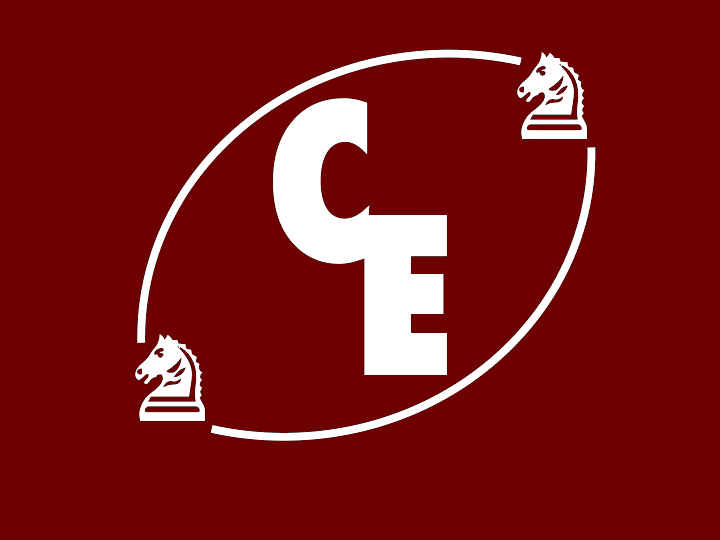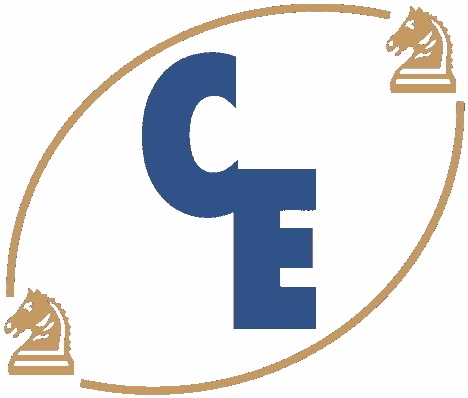ADINFER-ChessEVAL ©
Dedicated Chess Computers


MM Ohayon
| World Chess Championship in Travemünde (1981) |
|
In 1981, the World Championship in Travemünde
included an experimental section with a hitherto virtually
unknown program called "Princhess 2.9". This program was written by the Swede Ulf Rathsman for the Commodore. It took an astonishing second place with five points in seven games. The First place of the Experimental Group was attributed to the Fidelity X (Fidelity Elite '81) with six points, while the third place was taken by a Novag device with 4.5 points, and the fourth by Philidor experimental (SciSys Mark V) also with 4.5 points. The performance of the Princhess was a surprise for everyone, not only because it was obtained at an established competition, but also because in the late 1980, the Princess 1.2 was hopelessly relegated to the last place, with zero points, at a tournament in Stockholm (called “Micro ‘80”). Proving that the result at the World Championship was not by chance, was demonstrated at the "Micro '81", which took place in November 1981 in Stockholm, where Princhess 2.9 took again the second place. |
| The birth of the CONCHESS product line |
|
This unexpected result moved Gericke and Heine, the
two Managers of the Munich company Consumenta, to
ask Ulf Rathsman in Travemünde to get involved in
a private computer chess project. Consumenta was not completely inexperienced in this market, because until the early 80s the company held the distribution of the Fidelity chess computers. Nevertheless there is yet another name that needs to be mentioned in this context, without it this story could not have been told: Johan Enroth. He served Ulf Rathsman both financially, and especially as a tester on the side. In fact, the programmer gave up his programming engineering skills already in January 1981 in Stockholm... much to the dismay of his wife! The company delivered the hardware of the EES / Loproc, which first prototype was completed in just four weeks. For the production, they found a partner in a factory for Hi-Fi equipment in Ireland (Waltham Electronics), with which orders were usually negotiated in large quantities, in the range of 50,000 pieces! Here was probably one of the reasons for the subsequent difficulties. The sales opportunities had just not been properly assessed. One has to keep in mind that since 1983 only about 50,000 chess computers were sold in Germany. In 1982, then finally came on the market three chess computers with the ingenious brand name "Conchess" (= Consumenta Chess). The manufacturer initially estimated that a strong and elegant chess computer would be in high demand. As a result, three visually appealing models were built at the beginning of the unfortunately short career of the Conchess: - the "Escorter" (598 DEM) with a plastic housing of 30x30 cm corresponding roughly to the later Mephisto Modular, - the "Ambassador" (798 DEM) with a 40x40 cm large wooden board, and at the pinnacle, - the "Monarch" (998 DEM) with a tournament size wooden board. In all three models the electronics were hidden, housed completely inside the appliance, and were operated via board buttons with matching leds. Technically, the three “brothers” were completely identical: there was a magnetic sensor technology, the 24 Kbyte program, and a 6502 processor with 2 MHz. The modular system, incidentally, was designed so that the cassette could not only be exchanged but also so that, theoretically, a second cassette with an additional processor could be used! Yes, you read that correctly: theoretically a true multiprocessor was conceivable. Such a module was already being tested in 1982. However, it never came on the market because the company went bankrupt. Also the Swedish program could not hide behind the competition. The opening repertoire, with only 300 half-moves, was indeed not very big, but Conchess knew all the draw rules, had a checkmate search stage, and mastered the promotion. In 1982, this was certainly a big achievement. |
| CONCHESS Playing Strength |
|
The old question...
is, of course, about playing strength... The Conchess became one of the top programs since 1982, in spite of the Fidelity Prestige and the Sensory 9, which were really dangerously strong. Amazingly, in this context, a rating list, that I found in the Rochade N. 213 issue of April 1982, ranked the Princhess 2.9 with 1838 Elo behind the MGS III, while Grunfeld and Capablanca with 1849 Elo were second among the commercial Micros, before Mephisto II, the world champion SciSys Mark V or Novag's Savant, all direct competitors in the market. However, it must be noted that this evaluation was based on only 12 parts. Meaningful in this context were the results collected by Jan Louwman in mid-1982 at the tournament level against the following computers: Conchess - Mephisto II: 7.5 to 2.5; Conchess - Mark V: 7-‐3; Conchess - Morphy GGM: 6.5 to 3.5; Conchess - Fidelity Champion: 8.5 to 1.5; Conchess - Fidelity Elite: 1.5 to 2.5! If Louwman had plublished a "Dutch World Ranking of the chess computer" in January 1982 with these unlikely results, he would surely have been accused of the most incredible manipulations of any dealer or distributor from Germany! Let's look at an example: Sensory 9 - Conchess [A13] Tournament (2) [04/09/1982] 1.c4 e6 2.Nf3 Nc6 After this train, both computer are already by themselves 3.d4 Nf6 expect 4.Ld2 h6 5.e3 a6 6.Ld3 d5 7.0-‐0 dxc4 8.Lxc4 Ld6 9.Sc3 0-0 10.Tc1 e5 11.Se2 Lg4 12.dxe5 Nxe5 13.Sxe5 Lxe5 14.Lb4 Lxb2 15.Lxf8 Lxc1 16.Lxg7 Kxg7 17.Dxc1 b5 White should have overlooked about this draw ...? 18.Td1 De7 19.Ld3 ... No! 19 ... c5 c4 20.Sg3 21.Sf5 + Lxf5 22.Lxf5 TE8 23.Dc2 Qc7 24.a4 c3 25.Dd3 Qc5 26.axb5 axb5 These farmers are now the race makers 27.Ta1 b4 28.b3 Ta6 29th Ta1 c2 30.Te1 C1D 31.Txc1 Dxc1 + b2 33.h3 DXF1 32.Df1 + 34.Kxf1 Ne4 35.Ke2 B1d 36.Lxe4 dxe4 37.g3 Dc2 + 38.Ke1 Dd3 39.h4 Rd8 40.f4 Dd1 + 41.Kf2 Td2 # Result: 0-1 |
| Toward the End |
|
The year 1983 became suddenly very, very quiet for Conchess. Today it is difficult to imagine what went wrong: whether the not really convincing quality of the workmanship, with fragile reed contacts and simply glued on the frame, or because of changes in consumer behavior, but the fact remains that the distribution of the computers was liquidated in 1983 and quite a few customers demanded their money back for their faulty equipment. The Magazine DM no. 10/1983, p.22 titled: “A leading manufacturer of chess computers went bankrupt. Dealers must vouch for warranty periods". |
| A new start under a lucky star! |
|
In 1984, at the World Championships in Glasgow, there was a surprise: in the message list the Conchess name reappeared! Johann Enroth had once again reached into his purse and hired again Ulf Rathsman through his Stockholm company System Integration. The result of this effort was the Glasgow program, which was sold again in Germany through the company Loproc / EES and which could be used, thanks to its modular design, also by owners of older Conchess Chess Computers. This program could be used as an additional module (P-cassette) to the existing program. Furthermore, faster cassettes were available: - S ("Speed") with 3.2 MHz and - T ("top speed") with 6 MHz. Thus Conchess belonged not only to the absolute fastest programs on the market, but was tactically also by far the strongest. For owners of the old program, there was also the opening of cartridge L, which brought the old program opening at least technically on the state of Glasgow modules. CSS readers of the first hour still remember the sensational results of Conchess in the "Colditz test". This tactical skill level was also responsible for having that "Princhess X", one of three participating Conchess devices, tied for first place and thus a total of four also shared the world championship in Glasgow. An additional source of income for Rathsman and System Integration resulted from the commercialization of Rathsman program in the Mephisto modules B + P (1985) and later MM II (1986). With this money, a part of its investments could be repaid as well as Johan Enroth. |
| Finally CHECKMATE! |
|
The nec plus ultra of the development was reached with the Conchess T8, its Playmate program (1985) and an unbelievable 8MHz for that time! For almost 2000 DEM this was certainly by far the most potent strategist and a collector's item. This program started at the 1985 Micro World Cup Champion in Amsterdam, but it was eclipsed by the star of Richard Lang on his Mephisto. Unfortunately, behind its achievements, the second place of the Conchess team completely faded (there under the name Plymate or Princhess). After this succès d'estime there were no more other chess computer named Conchess, but Ulf Rathsman, after working on it for a while, launched it at the Micro World Cup Champion 1987 in Rome (3rd place in the software group with Plymate), 1988 in Almeria with Y!88 (pronounced Why not '88 = "Why not '88")! and 1989 in Portoroz with "Why not 89". However, after this the successes subsided and there was no more support by a manufacturer, so these were the last performances of Rathsman programs, apart from an experimental program called Conchess Playmate Victoria that stayed around until the beginning of 1996 (!), at about 1868 Elopunkten in the Swedish rating list. There were plans for implementing a Rathsman program in a Saitek module for the Leonardo/Galileo (named "Brute Force"), but the project never went beyond the planning stage. The T8 was representing not only a big achievement in terms of chess programming, but also, unfortunately, the end of the Conchess series. After not even been produced in 10,000 copies, Conchess was already becoming part of the Chess Computer History. |